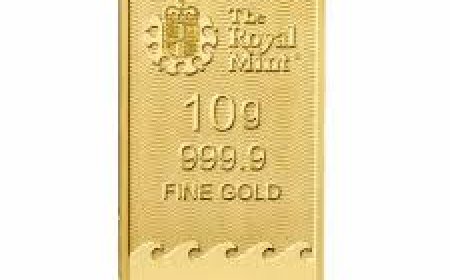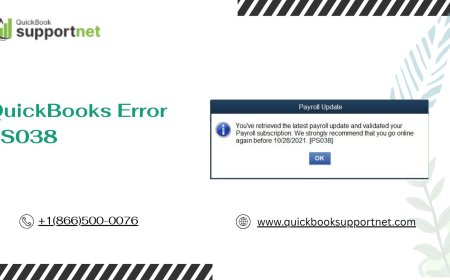How To Find Quesadillas Queso Oaxaca
How to Find Quesadillas Queso Oaxaca Quesadillas are one of the most beloved staples of Mexican cuisine, known for their simple elegance and rich, melty textures. At the heart of an authentic, exceptional quesadilla lies its cheese—specifically, Queso Oaxaca. This stringy, mild, and buttery cheese, named after the state of Oaxaca in southern Mexico, melts perfectly, stretches beautifully, and deli
How to Find Quesadillas Queso Oaxaca
Quesadillas are one of the most beloved staples of Mexican cuisine, known for their simple elegance and rich, melty textures. At the heart of an authentic, exceptional quesadilla lies its cheese—specifically, Queso Oaxaca. This stringy, mild, and buttery cheese, named after the state of Oaxaca in southern Mexico, melts perfectly, stretches beautifully, and delivers a delicate dairy flavor that elevates any dish. But for home cooks, food enthusiasts, and even professional chefs outside of Mexico, finding genuine Queso Oaxaca can be surprisingly challenging. This guide will walk you through everything you need to know to locate, identify, and confidently use authentic Queso Oaxaca for your quesadillas—whether you're shopping locally, ordering online, or making your own.
The importance of using the right cheese cannot be overstated. Many recipes substitute mozzarella, Monterey Jack, or even processed cheese slices, which, while convenient, lack the nuanced texture and flavor profile that Queso Oaxaca provides. Authentic Queso Oaxaca offers a creamy melt without becoming greasy, a subtle tang that balances well with spicy fillings, and a fibrous structure that creates that signature pull—making each bite of your quesadilla not just delicious, but truly memorable. This tutorial will empower you with the knowledge and tools to find the real deal, avoid common pitfalls, and enhance your culinary experience with confidence.
Step-by-Step Guide
Understand What Queso Oaxaca Is
Before you begin your search, it’s essential to understand what Queso Oaxaca actually is. Also known as “quesillo,” this cheese is a semi-soft, unaged cow’s milk cheese traditionally made using the pasta filata (stretched-curd) method—the same technique used for mozzarella. The curds are heated, stretched, and then wound into long, braided strands, resembling a ball of yarn. This gives Queso Oaxaca its distinctive texture: soft, elastic, and slightly moist, with a mild, milky flavor that’s less salty than mozzarella and more complex than Monterey Jack.
Unlike many industrial cheeses, authentic Queso Oaxaca is often made in small batches by family-run dairies in Oaxaca, using traditional methods passed down through generations. The milk is typically not pasteurized (though pasteurized versions are available for export), and the cheese is usually consumed within days of production. This perishability is one reason it’s not always readily available outside of Mexico.
Identify Authentic Packaging and Labeling
When shopping for Queso Oaxaca, packaging is your first clue. Authentic products will typically bear one or more of the following identifiers:
- “Queso Oaxaca” or “Quesillo” prominently displayed on the label
- “Hecho en Oaxaca” (Made in Oaxaca) or the name of a specific town or producer
- Appearance: Look for a white, slightly glossy cheese formed into a ball or roll, often wrapped in wax paper or plastic, with visible braided strands
- Ingredients: Should list only milk, salt, rennet, and possibly bacterial cultures. Avoid any product with additives like cellulose, preservatives, or stabilizers
Be wary of products labeled “Mexican cheese,” “string cheese,” or “Oaxaca-style cheese.” These are often imitations made with different milk sources or processes that compromise authenticity. Always read the ingredient list and country of origin.
Start with Local Latin American Markets
One of the most reliable places to find authentic Queso Oaxaca is at a local Latin American or Mexican grocery store. These markets often import directly from small producers in Mexico or carry cheeses made by Mexican-American cheesemakers who follow traditional methods.
When visiting such a store:
- Ask the staff: “¿Tienen queso Oaxaca auténtico?” (Do you have authentic Queso Oaxaca?)
- Request to see the cheese in person—ask if it’s made in Oaxaca or by a known producer like “La Gata” or “Don Jorge”
- Check the refrigeration: Authentic Queso Oaxaca should be kept cold, ideally between 35–40°F (2–4°C), and should feel slightly springy, not rubbery or dry
Many of these stores stock multiple varieties, so don’t be afraid to ask for a sample if permitted. The texture should be soft and easily pulled apart into strands. If it’s too firm or doesn’t stretch, it’s likely not authentic.
Explore Specialty Cheese Shops
High-end cheese shops and artisanal dairy retailers are increasingly carrying imported Mexican cheeses, including Queso Oaxaca. These establishments often prioritize traceability, small-batch production, and quality control.
To find one near you:
- Search online for “artisan cheese shop near me” or “Mexican cheese specialty store”
- Look for shops that feature regional Mexican cheeses on their website or in-store signage
- Call ahead and ask: “Do you carry authentic Queso Oaxaca from Oaxaca, Mexico?”
Many specialty shops provide detailed product information, including the producer’s name, region of origin, and date of import. This transparency is a strong indicator of authenticity. Some even offer pairing suggestions or recipes, which can be a helpful bonus for home cooks.
Order Online from Trusted Retailers
If you live in an area with limited access to Mexican markets or specialty cheese shops, online retailers offer a viable alternative. Several reputable U.S.-based and international vendors specialize in importing authentic Mexican cheeses directly from Oaxaca.
Recommended online sources include:
- MexGrocer.com – Offers vacuum-sealed Queso Oaxaca shipped frozen with dry ice
- Amazon Fresh / Amazon Grocery – Search for “Queso Oaxaca” and filter by “Frequently Bought Together” or “Imported from Mexico”
- La Michoacana Meat Market (online) – Known for high-quality dairy imports
- Champion Foods – Distributes authentic Oaxacan cheeses to restaurants and consumers
When ordering online:
- Check shipping methods: Queso Oaxaca must be shipped cold or frozen to preserve freshness
- Look for expiration dates—authentic cheese has a short shelf life, usually 10–21 days
- Read customer reviews for feedback on texture, flavor, and authenticity
- Verify the product is labeled as “Queso Oaxaca” and not “Mexican string cheese” or “Oaxaca-style”
Be cautious of sellers offering bulk quantities at unusually low prices. Authentic Queso Oaxaca is labor-intensive to produce and rarely inexpensive. If the price seems too good to be true, it likely is.
Check Mexican Restaurants and Food Hubs
Many Mexican restaurants that take pride in authenticity source their ingredients directly from Mexico. While you can’t typically buy cheese directly from a restaurant, you can use them as a resource.
Ask the chef or manager:
- “Where do you source your Queso Oaxaca?”
- “Do you have a supplier you recommend for home cooks?”
Many chefs are happy to share their trusted distributors. Some even sell their cheese to customers or have partnerships with local markets. This is an excellent way to discover local sources you may not have found otherwise.
Consider Making Your Own
If you’re passionate about culinary authenticity and have the time, making Queso Oaxaca at home is a rewarding endeavor. While it requires some equipment and patience, the process is not overly complex.
Basic homemade Queso Oaxaca recipe:
- Heat 1 gallon of whole milk to 90°F (32°C)
- Add 1/4 teaspoon liquid rennet and stir gently for 1 minute
- Let sit undisturbed for 45 minutes until curds form
- Cut curds into 1/2-inch cubes and let rest for 10 minutes
- Heat curds slowly to 105°F (40°C), stirring gently
- Drain curds in a colander, then place in a bowl of hot water (150–160°F / 65–70°C)
- Knead and stretch the curds until smooth and elastic, then pull into long strands
- Wind the strands into a ball or braid, and cool in cold water
Homemade Queso Oaxaca will be fresher and more flavorful than most store-bought versions. It’s also a great way to ensure no additives or preservatives are included. Store in the refrigerator for up to 10 days.
Verify Authenticity Upon Purchase
Once you’ve acquired your cheese, perform a quick authenticity check:
- Texture test: Gently pull a strand—it should stretch smoothly without snapping or becoming greasy
- Aroma test: It should smell mildly milky and clean, not sour, chemical, or overly salty
- Melt test: Heat a small piece in a pan—it should melt evenly and become stringy, not oily or clumpy
- Taste test: It should be buttery and mild, with a subtle tang and no artificial aftertaste
If your cheese fails any of these tests, it may be an imitation. Keep the packaging and contact the retailer for a replacement or refund.
Best Practices
Buy Fresh, Buy Often
Queso Oaxaca is a fresh cheese with a short shelf life. Unlike aged cheeses, it doesn’t improve over time—it deteriorates. For optimal flavor and texture, purchase it as close to your cooking date as possible. Ideally, use it within 3–7 days of purchase. If you buy in bulk, freeze portions in airtight bags for up to 3 months. Thaw in the refrigerator overnight before using.
Store Properly
Always store Queso Oaxaca in the coldest part of your refrigerator, preferably in its original packaging or wrapped in parchment paper inside a sealed container. Avoid plastic wrap directly touching the cheese, as it can trap moisture and promote mold. Never freeze unless necessary—freezing can alter the texture slightly, making it less ideal for quesadillas but still usable in cooked dishes like chiles rellenos or soups.
Pair with Complementary Ingredients
Queso Oaxaca’s mild flavor makes it incredibly versatile. To maximize its potential in quesadillas, pair it with:
- Roasted poblano peppers – Adds smokiness and depth
- Epazote or cilantro – Bright herbal notes
- Refried black beans – Earthy contrast
- Chipotle crema – A touch of heat and creaminess
- Thinly sliced onions and tomatoes – Fresh crunch
Avoid overpowering it with strong cheeses like blue or aged cheddar. Queso Oaxaca shines when it’s the star.
Use the Right Cooking Technique
For the perfect quesadilla:
- Use a cast iron skillet or comal over medium heat
- Lightly grease with vegetable oil or lard—avoid butter, which burns easily
- Place one tortilla in the pan, sprinkle cheese evenly, add fillings, then top with another tortilla
- Cook for 2–3 minutes per side until golden and the cheese is fully melted
- Let rest for 1 minute before cutting—this allows the cheese to set slightly and prevents oozing
Don’t overload your quesadilla. Too many fillings can prevent even melting and make flipping difficult.
Learn to Recognize Counterfeits
Common imposters include:
- Mozzarella – Melts well but lacks the fibrous texture and subtle tang
- Monterey Jack – Mild but often too firm and lacks stretch
- Processed cheese slices – Contain emulsifiers and additives that create a rubbery melt
- “Mexican blend” cheeses – Often a mix of cheddar, Monterey Jack, and other cheeses with no Oaxaca content
Always check labels and, if possible, ask for the origin. Authentic Queso Oaxaca has a unique mouthfeel that’s hard to replicate.
Build Relationships with Suppliers
If you regularly use Queso Oaxaca, establish a relationship with your local market or online retailer. Ask about restock dates, seasonal availability, and new imports. Many small producers release limited batches during festivals like Día de los Muertos or Guelaguetza—these are often the most authentic and flavorful.
Joining a local food co-op or Mexican culinary group can also provide access to exclusive sources and insider tips.
Tools and Resources
Online Databases and Directories
Several digital resources help locate authentic Mexican cheeses:
- Cheese.com’s Mexican Cheese Guide – Features maps of producers and importers
- Mexican Food Journal (mexicanfoodjournal.com) – Articles on regional cheeses and where to buy them
- Food52’s “Find It” Tool – Search for “Queso Oaxaca” and get nearby retailers
- Google Maps – Search “Mexican grocery near me” and read reviews mentioning “queso Oaxaca”
Mobile Apps
Apps like:
- Yelp – Filter by “Mexican grocery” and read reviews for mentions of authentic cheese
- Instacart – Search for Queso Oaxaca and see local store availability
- Keepa – Track price history and authenticity of products on Amazon
Books and Educational Materials
For deeper knowledge:
- “The Art of Mexican Cooking” by Diana Kennedy – Details traditional cheese-making in Oaxaca
- “Mexico: The Cookbook” by Margarita Carrillo Arronte – Includes recipes and sourcing tips
- “Cheese and Culture” by Paul Kindstedt – Explains the science behind pasta filata cheeses like Queso Oaxaca
YouTube Channels and Tutorials
Visual learners can benefit from:
- “Cooking with Adriana” – Demonstrates how to identify and use Queso Oaxaca
- “Mexican Food Simplified” – Features interviews with Oaxacan cheesemakers
- “The Latin Kitchen” – Shows step-by-step quesadilla preparation with authentic cheese
Community Forums
Join online communities like:
- Reddit’s r/MexicanFood – Active discussions on cheese sourcing
- Facebook Groups: “Authentic Mexican Ingredients” – Members share vendor recommendations
- Meetup.com – Look for Mexican cooking classes or cheese-tasting events
Real Examples
Example 1: A Home Cook in Chicago
Sarah, a food blogger from Chicago, struggled for months to find authentic Queso Oaxaca for her weekly quesadilla nights. After trying several grocery chains and even a large Latin market that sold “Oaxaca-style” cheese, she finally discovered a small family-owned store in the Pilsen neighborhood. The owner, a native of Oaxaca, imported cheese directly from his cousin’s dairy in Santa Cruz Amilpas. Sarah now orders a 2-pound wheel every two weeks. She says the difference in flavor and texture was “night and day”—her quesadillas went from “good” to “restaurant-quality.”
Example 2: A Chef in Portland
Diego, head chef at a Mexican fusion restaurant in Portland, wanted to upgrade his menu. He switched from using Monterey Jack to Queso Oaxaca after attending a food expo where a producer from Oaxaca demonstrated the cheese-making process. He now sources from Champion Foods and includes a small note on his menu: “Queso Oaxaca imported from Santa María Jalapa del Marqués.” Customers frequently comment on the “perfect stretch” and “creamy, clean finish.”
Example 3: An Online Buyer in Seattle
James, a home cook in Seattle, ordered Queso Oaxaca from MexGrocer.com after reading multiple reviews. He received his order frozen, with dry ice still present. The cheese was wrapped in wax paper, labeled in Spanish, and had visible braids. He tested it immediately: it stretched beautifully, melted evenly, and had a mild, milky aroma. He now recommends the site to all his friends and has started making homemade quesadillas for his neighborhood potlucks.
Example 4: A DIY Enthusiast in Austin
Luisa, a home cheesemaker in Austin, decided to try making Queso Oaxaca after failing to find a reliable source. Using a recipe from Diana Kennedy’s book and a cheese-making kit from Cultures for Health, she successfully produced her first batch. Though it took three tries to perfect the stretching technique, her final product was indistinguishable from store-bought authentic versions. She now teaches monthly workshops on traditional Mexican cheese-making.
FAQs
Is Queso Oaxaca the same as mozzarella?
No. While both are pasta filata cheeses, Queso Oaxaca is made from cow’s milk and has a milder, butterier flavor with a more elastic, stringy texture. Mozzarella is often made with buffalo or cow’s milk and tends to be wetter and saltier. Queso Oaxaca melts more evenly and doesn’t release as much oil.
Can I substitute Queso Oaxaca with other cheeses?
You can, but the result won’t be authentic. Monterey Jack or mild cheddar can work in a pinch, but they lack the signature stretch and subtle flavor. For the best results, use a blend of 75% Monterey Jack and 25% mozzarella if Queso Oaxaca is unavailable.
Why is Queso Oaxaca sometimes hard to find?
Because it’s a fresh, perishable cheese with a short shelf life, it’s not ideal for mass distribution. Many commercial producers make “Oaxaca-style” cheeses using different methods and ingredients to extend shelf life and reduce cost. Authentic versions require refrigeration and quick turnover, limiting their availability outside of Mexico and specialized markets.
Does Queso Oaxaca melt well?
Yes—exceptionally well. Its low moisture content and fibrous structure allow it to melt evenly without becoming greasy or separating. This makes it ideal for quesadillas, empanadas, and baked enchiladas.
How long does Queso Oaxaca last?
Unopened and refrigerated, it lasts 10–21 days. Once opened, use within 5–7 days. If frozen, it can last up to 3 months, though texture may become slightly grainy.
Is Queso Oaxaca safe to eat if I’m pregnant?
If made from pasteurized milk, yes. Always check the label. In Mexico, some traditional versions are made with raw milk, which is not recommended for pregnant women. In the U.S., most imported versions are pasteurized for safety.
Can I find Queso Oaxaca in Costco or Walmart?
Occasionally, but rarely authentic. If available, it’s likely a mass-produced “Mexican blend” or imitation. Always read the label and ingredients. If it says “pasteurized process cheese product,” it’s not Queso Oaxaca.
What’s the difference between Queso Oaxaca and Queso Panela?
Queso Panela is a fresh, crumbly cheese similar to feta or ricotta salata—it doesn’t melt. Queso Oaxaca is stretchy and meltable. They are used differently: Panela is often served in salads or grilled as-is, while Oaxaca is used for melting in quesadillas and casseroles.
Are there vegan alternatives to Queso Oaxaca?
Yes. Some brands produce plant-based string cheeses using cashew or coconut milk that mimic the texture. However, they lack the traditional flavor profile. For vegan quesadillas, try melted vegan mozzarella with a touch of nutritional yeast for depth.
How do I know if my Queso Oaxaca is still good?
Check for off smells (sour, ammonia-like), mold (especially blue or green), or excessive dryness. Fresh Queso Oaxaca should be soft, slightly moist, and smell mildly of milk. If it’s too firm or has a strong odor, discard it.
Conclusion
Finding authentic Queso Oaxaca is more than a shopping task—it’s a journey into the heart of Mexican culinary tradition. Whether you’re a home cook seeking to elevate your quesadillas, a chef aiming for authenticity, or a food lover curious about regional cheeses, the effort to source the real thing is profoundly rewarding. The mild, melty, stringy perfection of genuine Queso Oaxaca transforms an ordinary meal into an unforgettable experience.
This guide has equipped you with the knowledge to identify authentic products, locate trusted suppliers, avoid common imitations, and even create your own. From local markets in Oaxaca to online retailers in New York, the cheese is out there—you just need to know where and how to look.
Remember: authenticity lies in the details—the label, the texture, the smell, the stretch. Don’t settle for “Oaxaca-style.” Seek the real thing. And when you finally bite into a perfectly melted, cheese-pulling quesadilla made with true Queso Oaxaca, you’ll understand why this simple cheese has been cherished for generations.
Start your search today. Your next quesadilla deserves nothing less.

























